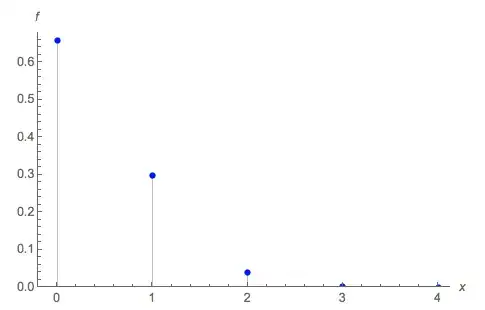I should perhaps note that the accepted solution appears incorrect.
The distribution of the number of ace cards in a 5-card hand is a problem in sampling without replacement ... which leads to a Hypergeometric distribution.
Imagine an urn contains a total of $T$ balls, $r$ of which are red $(r<T)$. The experiment proceeds by drawing one-by-one a sample of $n$ balls from the urn without replacement $(n<T)$. Interest lies in determining the pmf of $X$, where $X$ is the number of red balls drawn. Then, the pmf of $X$, $P(X=x)$ is:
$$f(x)=\frac{\left(
\begin{array}{c}
n \\
x \\
\end{array}
\right) \left(
\begin{array}{c}
T-n \\
r-x \\
\end{array}
\right)}{\left(
\begin{array}{c}
T \\
r \\
\end{array}
\right)}$$
In our example, the 'urn' is the deck of $T=52$ playing cards, and the 'red balls' are the ace cards, so $r=4$. There are $n=5$ cards in a hand. Therefore, the pmf of the number of ace cards in a hand of 5 cards is given by:
$$f(x)=\frac{\left(
\begin{array}{c}
5 \\
x \\
\end{array}
\right) \left(
\begin{array}{c}
47\\
4-x \\
\end{array}
\right)}{\left(
\begin{array}{c}
52 \\
4 \\
\end{array}
\right)}$$
where $X = \{0,1,2,3,4\}$.In the case of just one ace, $P(X=1) = \frac{3243}{10829} \approx 0.299474$.
The following diagram plots the pmf of the number of aces in a hand of 5 cards:

